CAADRIA 2019 AWARDS
The research team led by INESC-ID Researcher António Menezes de Leitão received last week two awards during the CAADRIA conference, Best Paper Award and Best Presentation Award.

The paper From Visual Input to Visual Output in Textual Programming co-authored by Maria João Sammer, António Leitão and Inês Caetano won the best paper award. The work approaches Algorithmic Design that uses algorithms to generate designs. These algorithms are built using either a Visual Programming Language (VPL) or a Textual Programming Language (TPL). In architecture, there is a clear propensity to the use of VPLs, e.g., Grasshopper or Dynamo, over the use of TPLs, e.g., Python or AutoLisp. In addition to all the user-friendly and interactive features that make VPLs more appealing to architects, most of them already integrate components for textual programming. In contrast, TPLs have not been as successful in incorporating visual features. Given the user-friendliness of VPLs and the relevance of TPLs for large-scale and complex designs, we discuss Visual Input Mechanisms (VIMs) in the context of TPLs. In this paper, we extend previous research in this area by exploring and implementing the most valuable VIMs in a TPL adapted for architectural design.
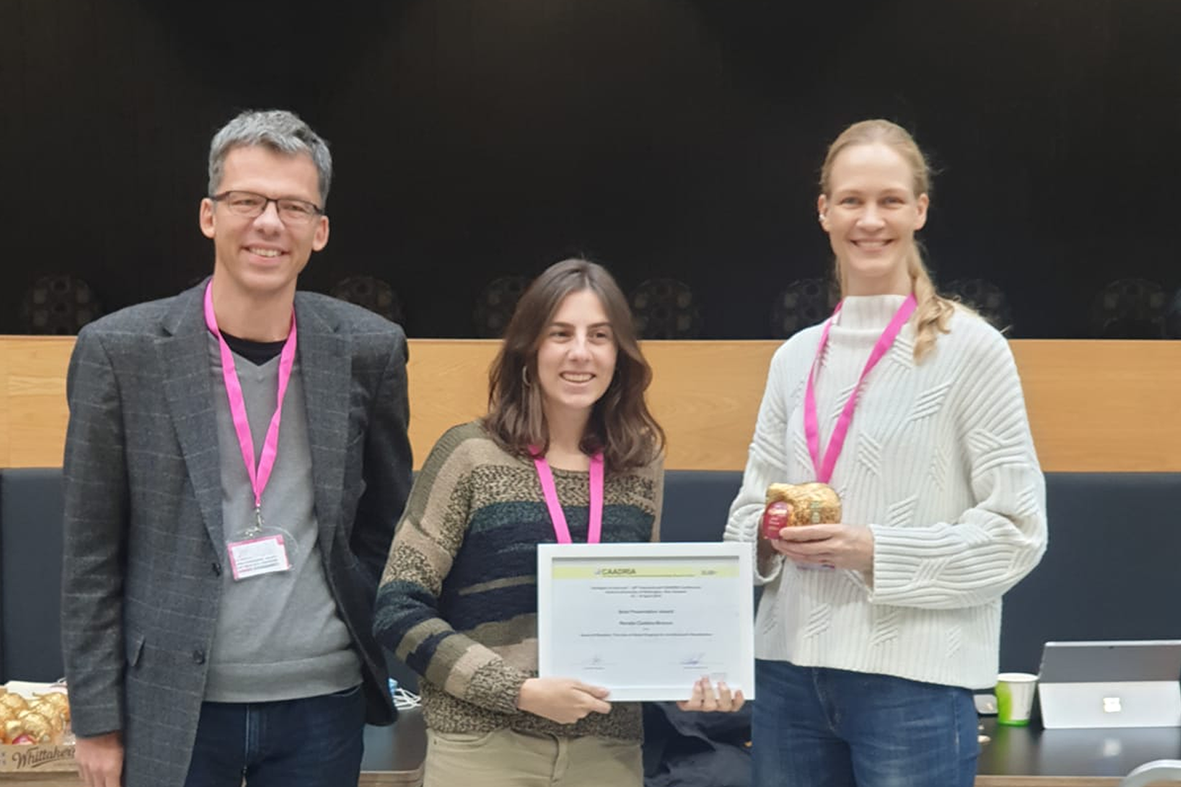
Best Presentation
Researcher Renata Castelo Branco was awarded best presentation paper
for the publication Game of Renders: The Use of Game Engines for Architectural Visualization. The paper shows that Good visualization mechanisms offer architects, and their clients, a better grasp of how their designs are going to turn out when built, and the experience one might have inside the constructions. This also helps the architect orient the design in a more informed manner. However, typically used modeling tools do not offer satisfactory visualization solutions. The operations available to view and navigate through the 3D space are flawed in terms of speed, interactivity, and real-time rendering quality. To solve this issue, we propose the coupling of a portable algorithmic design framework with a Game Engine (GE) to support interactive visualization of architectural models and increase the rendering performance of the framework. We explain in detail this integration, and we evaluate this workflow by implementing a case study and comparing the performance of the GE to architectural modeling tools.
The 24th Annual Conference of the Association for Computer-Aided Architectural Design Research in Asia under the theme ” ‘Informed & Intelligent” took place in New-Zeland between 15th and 18th of April and within the coverage of the call lied a broad spectrum of approaches ranging from speculative, informal investigations to conventional scientific research.
Upcoming Events
OLISSIPO Workshop: “How to design a graphical abstract” with Dr. Rita Félix (CNC-UC)
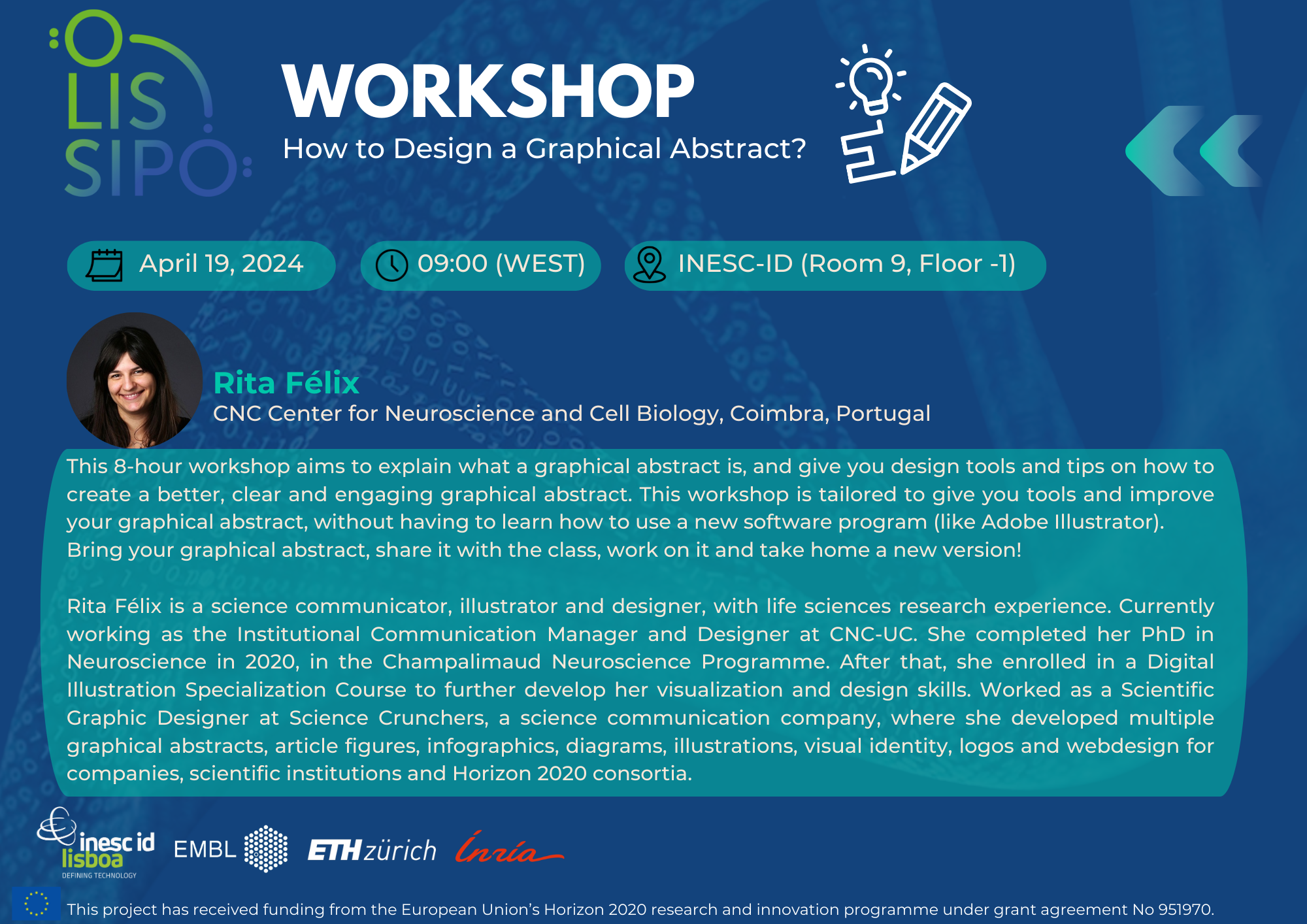
On April 19, the OLISSIPO project will host an 8-hour workshop titled “How to design a graphical abstract” with Dr. Rita Félix, a science communicator, illustrator and designer from CNC Center for Neuroscience and Cell Biology (Coimbra, Portugal). Registration is free and seating is limited.
Registration Deadline: April 5 | Register here (free but mandatory)
Date & Time: April 19, 09h00-18h00 ( 8-hours)
Where: INESC-ID, R. Alves Redol 9, 1000-029 Lisboa | Room 9 (Auditorium), Ground Floor
Summary: “How to design a graphical abstract” Workshop aims to explain what a graphical abstract is, and give you design tools and tips on how to create a better, clear and engaging graphical abstract. This workshop is tailored to give you tools and improve your graphical abstract, without having to learn how to use a new software program (like Adobe Illustrator). Bring your graphical abstract, share it with the class, work on it and take home a new version.
Short Bio: Rita Félix is a science communicator, illustrator and designer, with life sciences research experience. Currently working as the Institutional Communication Manager and Designer at CNC-UC. She completed her PhD in Neuroscience in 2020, in the Champalimaud Neuroscience Programme. After that, she enrolled in a Digital Illustration Specialization Course to further develop her visualization and design skills. Worked as a Scientific Graphic Designer at Science Crunchers, a science communication company, where she developed multiple graphical abstracts, article figures, infographics, diagrams, illustrations, visual identity, logos and webdesign for companies, scientific institutions and Horizon 2020 consortia. More information at https://ritallfelix.wixsite.com/portfolio .
INESC-ID talk: “Rise of the AI-Empowered End User Software Engineer” by Ed Ayers and Andy Gordon (Cogna)

On April 19, INESC-ID will host a talk by Ed Ayers and Andy Gordon from the startup Cogna. The talk is titled “Rise of the AI-Empowered End User Software Engineer” and is organised by INESC-ID researcher Nuno Lopes.
Date & Time: April 19, 15h00 -16h00
Where: INESC-ID, Rua Alves Redol, 9, 1000-029 Lisboa | Room 9 (Auditorium), Ground Floor
Summary:
“What if natural language really is the new programming language? Inspired by the transformation of professional software engineering by generative AI, let’s take the next step: empowering end users. We can boost their productivity with hyper-customized software generated from natural language. This challenge needs research right across software engineering: requirements, architecture, coding, testing, verification, repair, and maintenance. We will survey current progress and open research questions in this exciting new area of programming language research.”
(Photo: Cogna website)
Técnico Open Day 2024
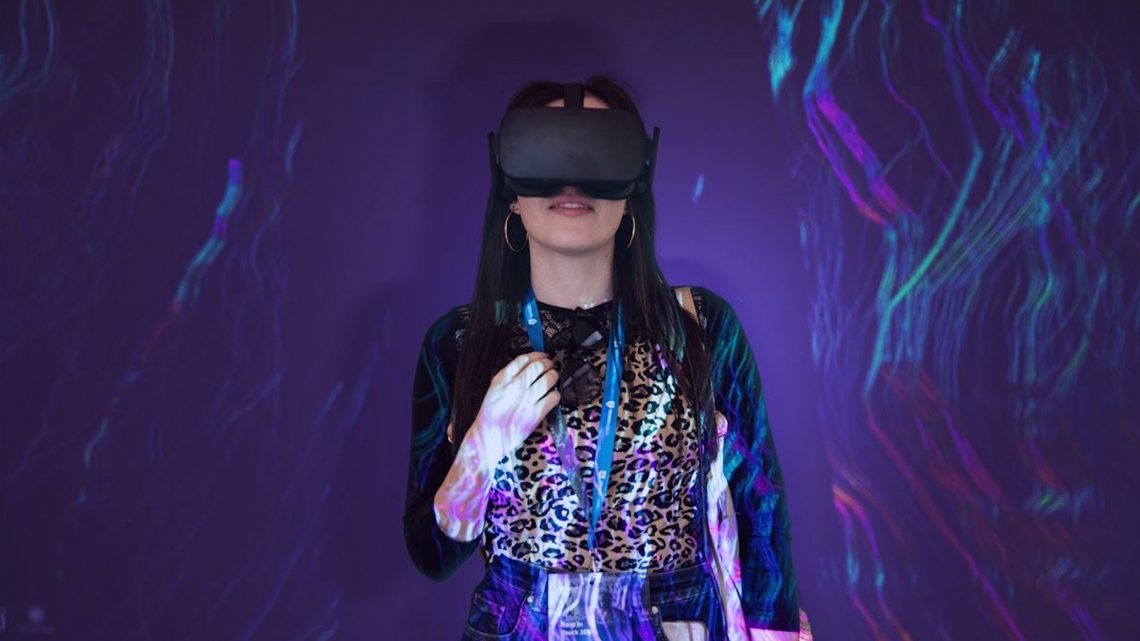
Técnico Open Day 2024
On April 20, Instituto Superior Técnico will host the Técnico Open Day 2024, at the Alameda Campus. The event will consist of a science fair, guided visits, and interaction with members of the IST community.
Date & Time: April 20, 10h00-17h00
Where: Instituto Superior Técnico – Alameda Campus (Free Entry)
Summary: The 2024 edition of the Técnico Open Day will count with over 60 activities within the science fair, guided visits to the campus, including teaching and research laboratories, and contact with professors, researchers and students from IST. The event will be an opportunity to hold an interactive exhibition, displaying more than 40 research and innovation projects, and allowing all attendees to become more familiar with the School and its initiatives.
EV4EU will be part of the Open Day “Science Fair”, representing the project at the INESC-ID info stand from 10am to 5pm. Project researchers Cindy P. Guzman and Larissa Montefusco will be at the Info booth to share with visitors an overview of the project, its main goals and latest developments. Under the title “Electric Vehicles Management for Carbon Neutrality: Discover how Electrical Vehicles can contribute to the fight against climate change”, the EV4EU team will focus on explaining how can EV4EU plan solutions, and support the massification of electrical vehicles while contributing to the decrease of carbon emissions and global warming.
Full agenda of the event here
Know more about the project here
OLISSIPO Lecture: “Bioinformatics Infrastructure in Bielefeld and in Germany” by Jens Stoye (Bielefeld University)
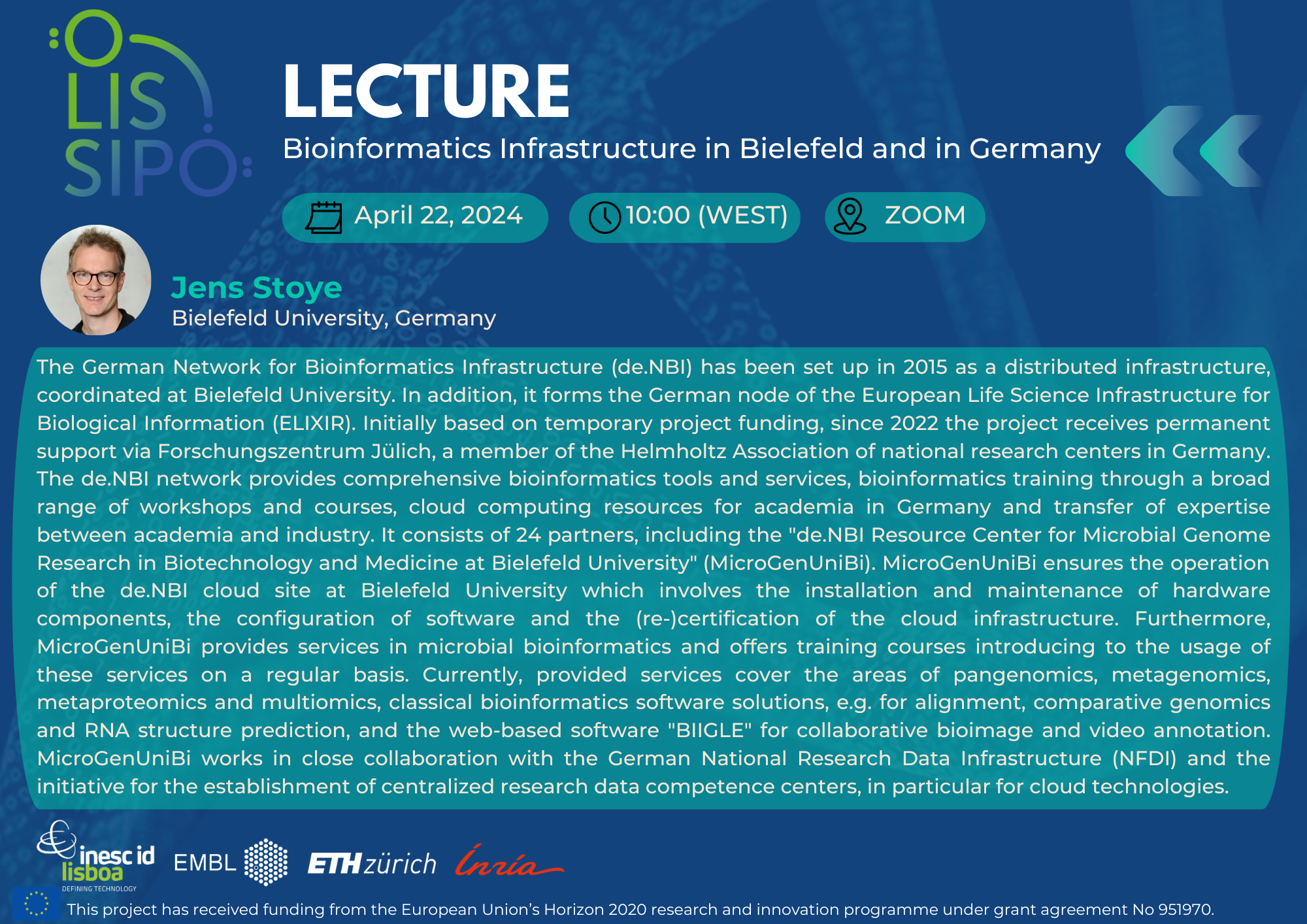
On April 22, the OLISSIPO project will host the online lecture: “Bioinformatics Infrastructure in Bielefeld and in Germany” by Jens Stoye (Bielefeld University).
Date & Time: April 22, 10h00-11h00
Where: Online via Zoom here
Summary: “The German Network for Bioinformatics Infrastructure (de.NBI) has been set up in 2015 as a distributed infrastructure, coordinated at Bielefeld University. In addition, it forms the German node of the European Life Science Infrastructure for Biological Information (ELIXIR). Initially based on temporary project funding, since 2022 the project receives permanent support via Forschungszentrum Jülich, a member of the Helmholtz Association of national research centers in Germany. The de.NBI network provides comprehensive bioinformatics tools and services, bioinformatics training through a broad range of workshops and courses, cloud computing resources for academia in Germany and transfer of expertise between academia and industry. It consists of 24 partners, including the “de.NBI Resource Center for Microbial Genome Research in Biotechnology and Medicine at Bielefeld University” (MicroGenUniBi). MicroGenUniBi ensures the operation of the de.NBI cloud site at Bielefeld University which involves the installation and maintenance of hardware components, the configuration of software and the (re-)certification of the cloud infrastructure. Furthermore, MicroGenUniBi provides services in microbial bioinformatics and offers training courses introducing to the usage of these services on a regular basis. Currently, provided services cover the areas of pangenomics, metagenomics, metaproteomics and multiomics, classical bioinformatics software solutions, e.g. for alignment, comparative genomics and RNA structure prediction, and the web-based software “BIIGLE” for collaborative bioimage and video annotation. MicroGenUniBi works in close collaboration with the German National Research Data Infrastructure (NFDI) and the initiative for the establishment of centralized research data competence centers, in particular for cloud technologies.”
Short Bio: Jens Stoye received his PhD degree (1997) in Bioinformatics from Bielefeld University, Germany. After postdoctoral positions at the University of California at Davis (1997-1998) and the German Cancer Research Center in Heidelberg (1998-2001), he became head of the Algorithmic Bioinformatics group at the Max Planck Institute for Molecular Genetics in Berlin (2001-2002). Stoye has been a full professor for Genome Informatics back at Bielefeld University since 2002. His research interests are in algorithms for bioinformatics, genome-scale sequence analysis, metagenomics and comparative genomics. In 2017, he also became a member of the board of directors of the Center for Interdisciplinary Studies (ZiF), Bielefeld University’s Institute for Advanced Study. Since 2023 he has been ZiF’s Executive Director.
Educational Workshop on Responsible AI for Peace and Security (UNODA)
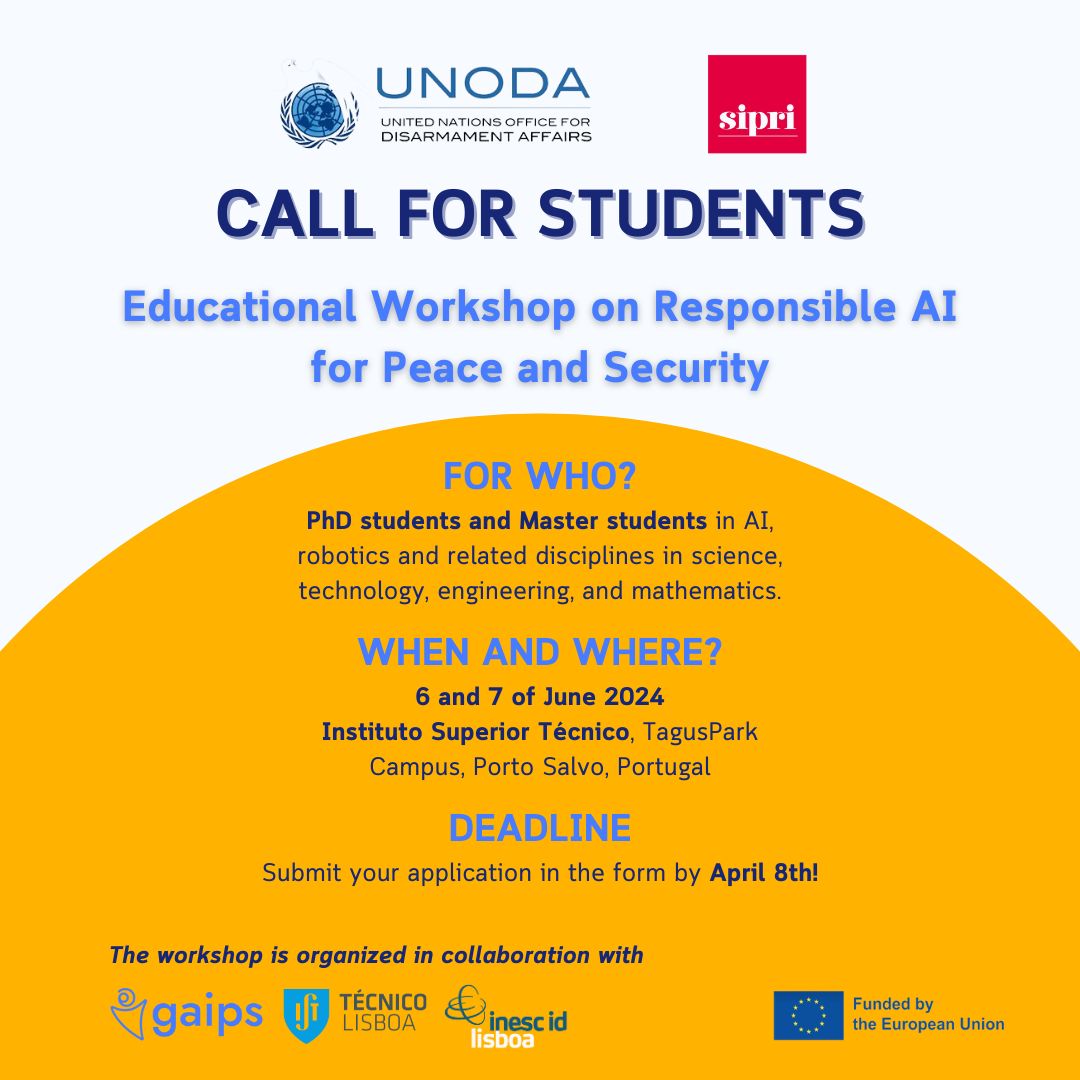
On June 6 and 7, The United Nations Office for Disarmament Affairs (UNODA) and the Stockholm International Peace Research Institute (SIPRI) are offering a selected group of technical students the opportunity to join a 2-day educational workshop on Responsible AI for peace and security.
The third workshop in the series will be held in Porto Salvo, Portugal, in collaboration with GAIPS, INESC-ID, and Instituto Superior Técnico. The workshop is open to students affiliated with universities in Europe, Central and South America, the Middle East and Africa, Oceania, and Asia.
Date & Time: June 6 a 7
Where: IST – Tagus Park, Porto Salvo
Registration deadline: April 8
Summary: “As with the impacts of Artificial intelligence (AI) on people’s day-to-day lives, the impacts for international peace and security include wide-ranging and significant opportunities and challenges. AI can help achieve the UN Sustainable Development Goals, but its dual-use nature means that peaceful applications can also be misused for harmful purposes such as political disinformation, cyberattacks, terrorism, or military operations. Meanwhile, those researching and developing AI in the civilian sector remain too often unaware of the risks that the misuse of civilian AI technology may pose to international peace and security and unsure about the role they can play in addressing them. Against this background, UNODA and SIPRI launched, in 2023, a three-year educational initiative on Promoting Responsible Innovation in AI for Peace and Security. The initiative, which is supported by the Council of the European Union, aims to support greater engagement of the civilian AI community in mitigating the unintended consequences of civilian AI research and innovation for peace and security. As part of that initiative, SIPRI and UNODA are organising a series of capacity building workshops for STEM students (at PhD and Master levels). These workshops aim to provide the opportunity for up-and-coming AI practitioners to work together and with experts to learn about a) how peaceful AI research and innovation may generate risks for international peace and security; b) how they could help prevent or mitigate those risks through responsible research and innovation; c) how they could support the promotion of responsible AI for peace and security.”
